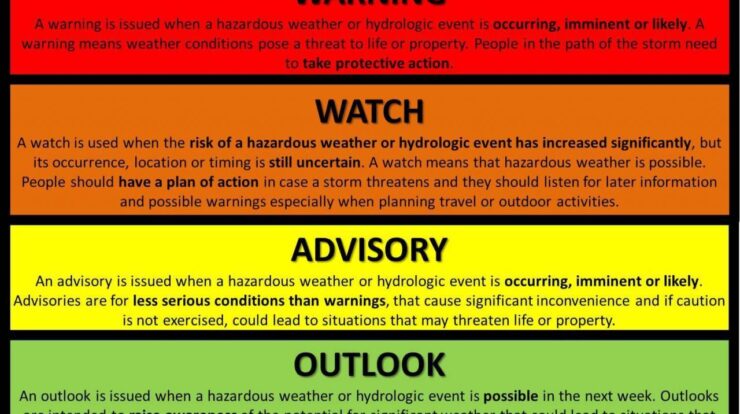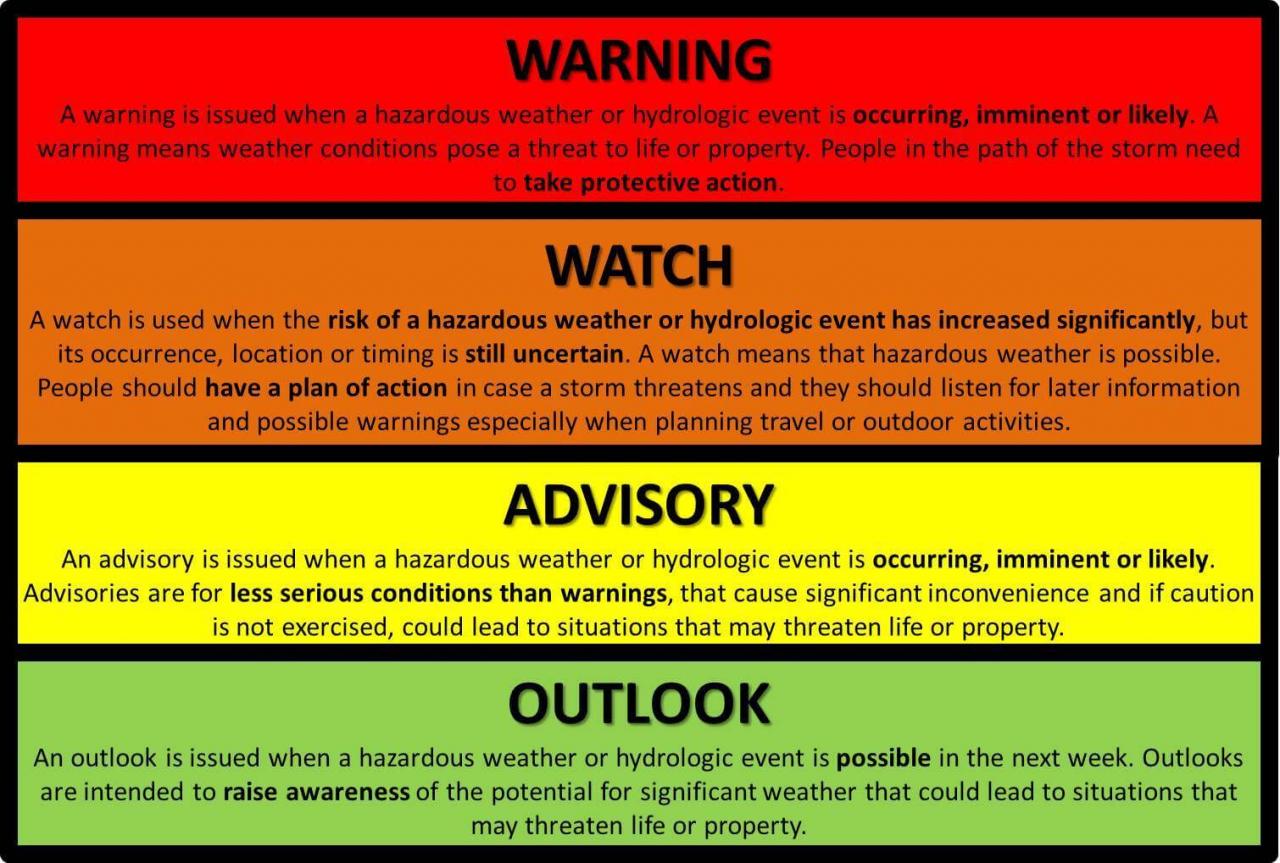
Is a watch or warning worse – In the realm of weather forecasting and emergency preparedness, the distinction between a watch and a warning holds critical significance. While both convey important information, their nuances can have profound implications for safety and well-being. Embark on an exploration of these terms, unraveling their differences, contextual factors, and the appropriate responses they demand.
When severe weather looms, the timely issuance of a watch or warning can provide invaluable lead time for individuals to take necessary precautions. Understanding the severity and urgency associated with each term empowers us to make informed decisions that can potentially save lives and property.
Watches and Warnings: Understanding the Differences

In the realm of disaster preparedness, it’s crucial to distinguish between a watch and a warning. These terms convey varying levels of severity and urgency, guiding individuals in taking appropriate actions to safeguard their well-being.
Definitions and Distinctions
A watchindicates that conditions are favorable for a hazardous event to occur. It serves as a heads-up, providing ample time for preparation and monitoring the situation.
A warning, on the other hand, is issued when a hazardous event is imminent or already happening. It demands immediate action to protect oneself from the impending danger.
Contextual Factors
Watches are often issued when weather conditions are conducive to severe storms, such as hurricanes or tornadoes. They allow authorities and individuals to stay alert and gather necessary resources.
Warnings are issued when a hazardous event has been confirmed or is expected to impact a specific area within the next 24 to 48 hours. They are typically associated with imminent threats like wildfires, floods, or earthquakes.
Impact and Response, Is a watch or warning worse
Ignoring a watch can result in delayed or inadequate preparation, increasing the risk of injury or property damage. In contrast, ignoring a warning can have dire consequences, as it implies an immediate threat to life and safety.
For a lively celebration that blends history, culture, and community spirit, look no further than Kingsday Netherlands . This annual event commemorates the birth of the Dutch King, King , and brings together people from all walks of life to celebrate Dutch unity and pride.
When a watch is issued, it’s recommended to:
- Monitor weather updates and news reports
- Prepare an emergency kit with essential supplies
- Identify evacuation routes and safe shelters
Upon receiving a warning, it’s crucial to:
- Seek shelter immediately
- Follow instructions from local authorities
- Stay informed about the situation through reliable sources
Comparative Analysis
| Characteristic | Watch | Warning |
|---|---|---|
| Definition | Indicates potential for a hazardous event | Confirms imminent or ongoing hazardous event |
| Severity | Moderate | High |
| Urgency | Allows for preparation time | Immediate action required |
| Appropriate Response | Monitor situation, prepare emergency kit | Seek shelter, follow instructions |
Closing Notes: Is A Watch Or Warning Worse

Navigating the complexities of weather watches and warnings requires a keen understanding of their distinct characteristics and the appropriate actions to take in each scenario. By recognizing the severity and urgency conveyed by these terms, we equip ourselves with the knowledge and preparedness to face potential hazards with confidence and resilience.
FAQ Compilation
What is the difference between a watch and a warning?
In a different realm, the devastating Lincoln Nebraska Tornado left a trail of destruction in its wake. This powerful storm underscores the importance of safety and preparedness in the face of severe weather. Meanwhile, the Elkhorn Nebraska Tornado provides a comprehensive guide to its history, safety measures, and recovery efforts.
A watch indicates that conditions are favorable for a hazardous event to occur, while a warning signifies that the event is imminent or already happening.
When should I take action based on a watch or warning?
During a watch, stay informed and be prepared to take action if conditions worsen. When a warning is issued, take immediate protective measures to ensure safety.
How can I stay informed about weather watches and warnings?
Monitor official weather sources such as the National Weather Service or reputable news outlets for timely updates and alerts.





